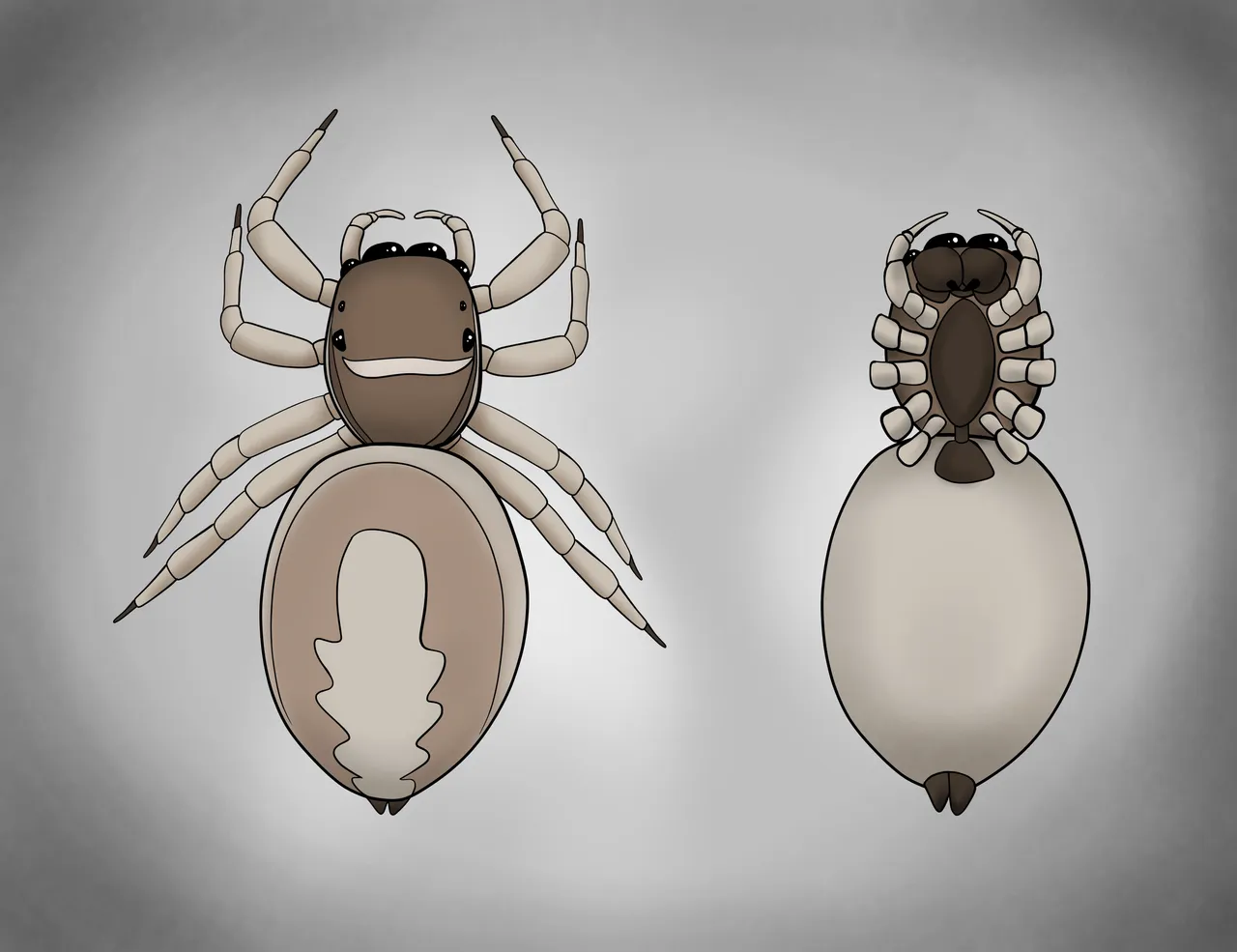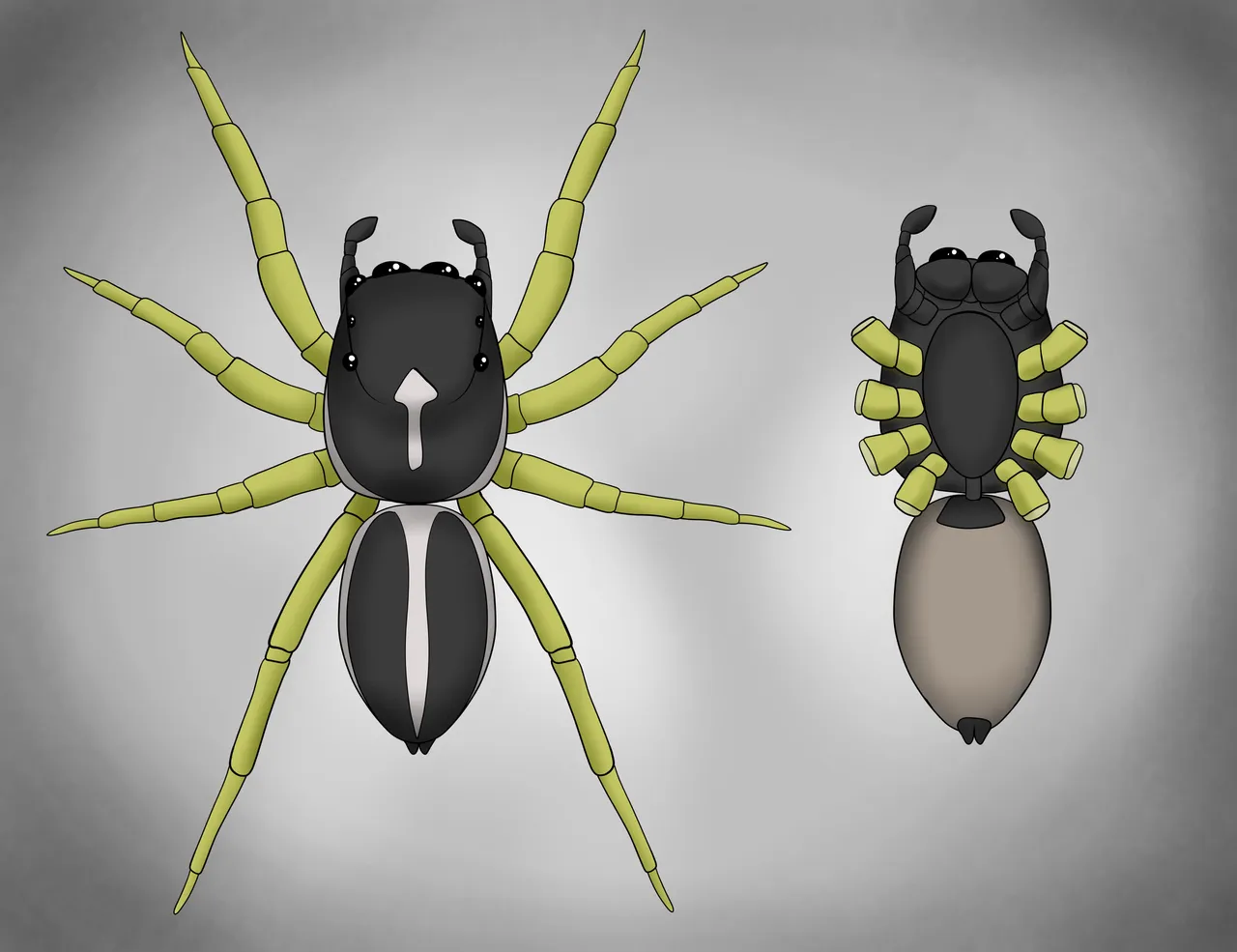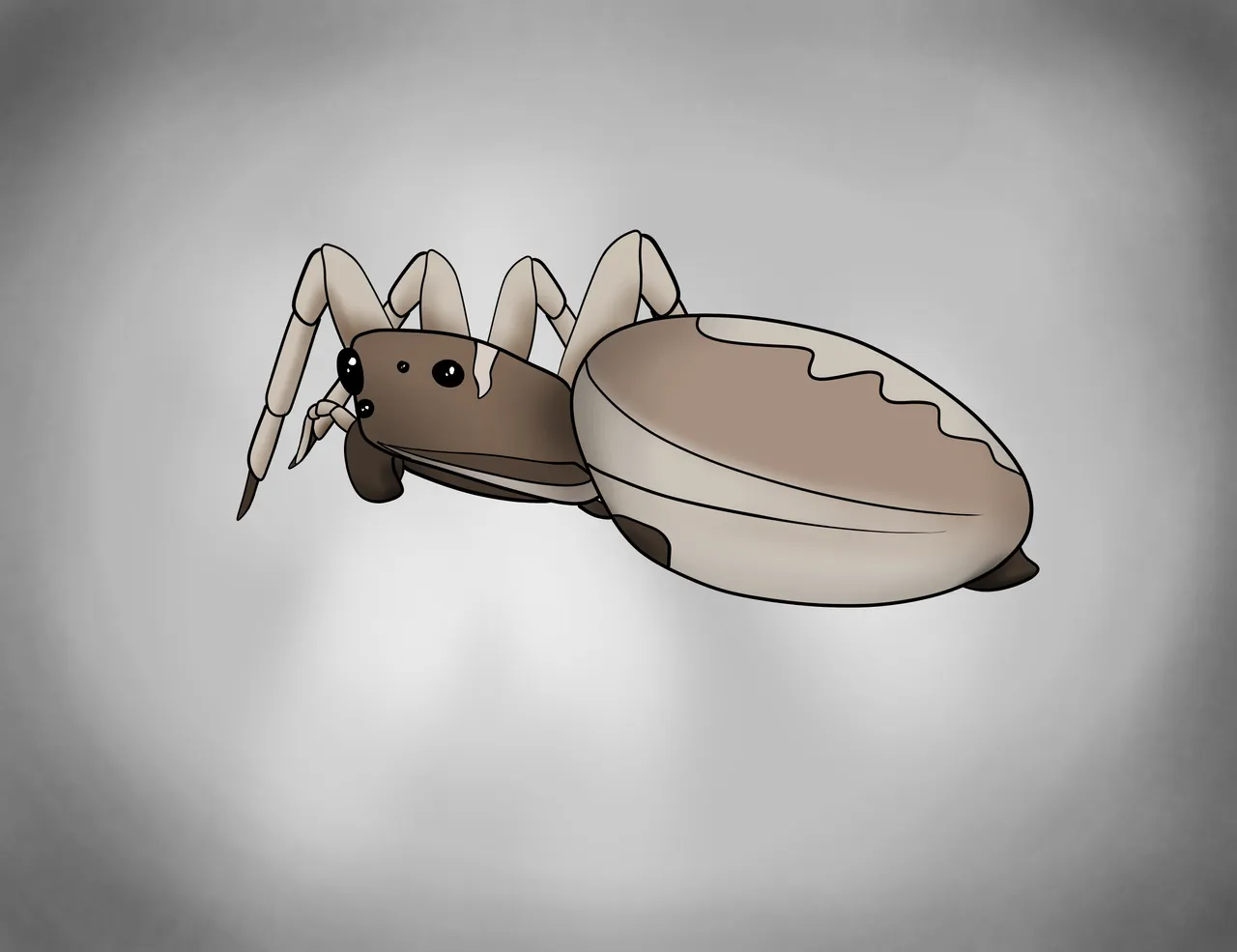Taxon:
- Class: Arachnida
- Order: Araneae
- Infra-Order: Araneamorph (true spiders)
- Family: Salticidae
- Genus: Heliophanus
- Species: H. pistaciae
Female
Around 5mm in body length. Leg span of approximately 7mm diagonally.
Cephalothorax:
Cephalic region slightly raised. Carapace greyish light brown with light band across area behind anterior median eyes and white line under. Faint white line on edges of carapace with brown line above each. Chelicera and sternum dark, sternum oval. Pedipalps light in colour.
Abdomen:
Long and wide abdomen, light brown with light band across dorsal anterior stretching to posterior and light leaf pattern dorsal centre. Spinnerets dark. Ventral light with dark epigyn.
Legs:
Legs short and light in colour with dark tarsi. 4th pair longest, others subequal.
Male
Around 5mm in body length. Leg span of approximately 7mm diagonally.
Cephalothorax:
Black carapace with white line posterior centre ending at fovea with small patch, and white lines on posterior margins. Chelicera and pedipalps black, palps with slightly swollen tarsi. Sternum oval and black.
Abdomen:
Abdomen thin, dorsally black with white line down centre, and across anterior wrapping along sides to posterior. Venter pale with dark epigastric furrow and spinnerets.
Legs:
Legs pale yellow. 4, 1, 2, 3.
ABOUT THE GENUS
This genus is iconic for the light band that runs across the anterior dorsal abdomen, sometimes through to the posterior. Due to this marking, the genus was given its name. Heliophanus roughly meaning “sun cloth” and thus are commonly known as sun jumping spiders. They are mostly found in Africa, though some occur in Eurasia. They tend to be small spiders, averaging at around 5mm in body length. The males tend to be black in colour with an almost metallic shine, while the females are brown and dull as seen in H. pistaciae.




